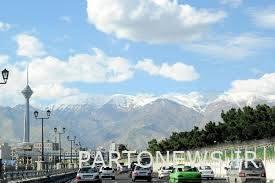Increase in air pollution this year

According to Moj news agency, The Tehran Air Quality Control Company published a report on the air quality of the capital in 1400: Tehran city had two clean days (0.6 percent), 249 acceptable days (68.2 percent), and 108 unhealthy days for the group. sensitive people of the society (29.6 percent) and six days were unhealthy (1.6 percent). In total, the number of days with unfavorable conditions decreased from 123 days in 1396 to 114 days in 1400, which mostly applies to unhealthy conditions.
Last year, there were 95 days of particulate pollutants smaller than 2.5 microns, 23 days of ozone pollutants, 8 days of pollutants of suspended particles smaller than 10 microns, and 13 days of nitrogen dioxide pollutants exceeding the permissible limit. On some polluted days, more than one pollutant was above the health limit. In total, the number of days with unfavorable conditions regarding the ozone pollutant decreased significantly compared to 2016, and the number of polluted days increased for the other mentioned pollutants.
Also, during the year 1400, on 23 days, more than one pollutant exceeded the permissible limit, during which three pollutants exceeded the standard limit on two days, and on 21 days, two standard pollutants exceeded the standard limit.
The most polluted day in terms of air quality index in the year 1400 was the first of December with an index of 165 in terms of pollutants smaller than 2.5 microns and the cleanest day of the year was the first of April with an index of 43. This year, the most polluted days were observed in the months of December (26 days), January (16 days), February and July (14 days), respectively, and May, with 31 days of acceptable weather, is the only month without polluted days this year. Was.
Comparison of the weather of Tehran city during 1400 with last year
Meteorological quantities including temperature, wind speed and direction, relative humidity, pressure, horizontal visibility, precipitation and atmospheric stability have been analyzed based on the data of Mehrabad weather stations on a daily, monthly and seasonal basis. In addition to that, the quantity of boundary layer height has also been checked using the re-analyzed data (ERA5) for the mentioned time period, and the ventilation coefficient at Mehrabad station has been calculated separately for daily, monthly and seasonally.
The results of studies indicate that in 1400, the temperature increased in all seasons compared to last year, which was accompanied by a decrease in relative humidity, especially in spring. The wind speed in 1400 has increased compared to last year in all other seasons, except in the summer season.
Investigations showed that the height of the boundary layer in 1400 has increased in all seasons compared to last year, and the ventilation coefficient has increased in all seasons this year except for winter compared to last year, which can be caused by the relatively calm atmosphere in the upper levels. be
In all seasons except the summer season, in 1400 compared to the previous year, a significant decrease in rainfall was observed. In the summer season, a 20% increase in the amount of precipitation has been observed, however, the amount of precipitation in this season has been very small. The study of atmospheric stability also showed that the degree of atmospheric instability increased in 1400 compared to last year, except for the spring season, in other seasons.
Temperature inversion conditions also occurred in the autumn and winter seasons, which increased by 33% in the autumn season and decreased by 50% in the winter season compared to the previous year.

